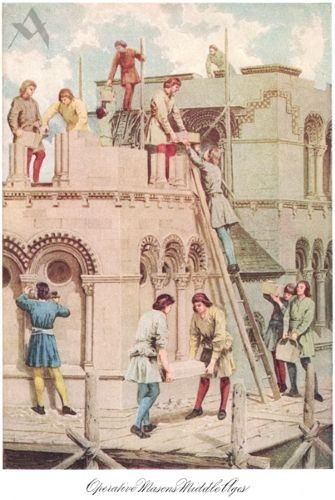Into the Darkness: The Profound Symbolism of the Chamber of Reflection


The Cave and the Womb: Symbolism of the Chamber Itself
The Chamber of Reflection is designed to be a symbolic space, representing at once a cave and a womb. As a cave, it connects the candidate to the alchemical element of Earth, symbolizing a descent into the self, a journey to one's own center. It is a symbolic burial, where the "profane" man—the person he was before Freemasonry—must die to his old life of ignorance and vice.
Simultaneously, the chamber represents a maternal womb. In this dark, quiet space, the candidate is in a state of regression, returning to a point of innocence before being symbolically reborn as a new man—an initiate dedicated to the pursuit of light, truth, and wisdom. This dual symbolism of tomb and womb encapsulates the entire purpose of Masonic initiation: the end of one way of being and the beginning of another.
Meditations on Mortality: The Skull, Scythe, and Hourglass
The chamber is furnished with objects intended to focus the candidate's mind on fundamental truths. The most striking of these is often a human skull and crossbones. This is not a macabre decoration, but a memento mori, a profound reminder of mortality. It confronts the candidate with the inevitability of death, the vanity of worldly possessions and status, and serves as a powerful call to humility.
Alongside the skull, one might find a scythe and an hourglass. The scythe, the implement of the "Grim Reaper" or Father Time, symbolizes that death is the great equalizer, coming for all people regardless of their station in life. The hourglass, with its steadily falling sand, represents the swift and irreversible passage of time, urging the candidate to consider how he has used his time on Earth and how he will use the time he has left.

The Alchemical Elements and the Promise of Rebirth
Beyond the symbols of mortality, the chamber contains elements of hope and transformation. Small dishes containing Salt, Sulfur, and Mercury (the latter often represented by the image of a Rooster) allude to the three prime principles of alchemy. These represent the body, soul, and spirit of man, suggesting that the candidate is about to undergo an alchemical transmutation of his own nature.
The Rooster is a particularly important symbol. It is the creature that calls for the dawn, the herald of the new day. For the candidate sitting in darkness, it is a message of encouragement and hope, a promise that the light he seeks is coming. Simple provisions of bread and water are also present, symbolizing the need for a life of simplicity and reminding the candidate that while the body needs physical sustenance, the soul requires spiritual nourishment.

The Philosophical Testament and V.I.T.R.I.O.L.
During his time in the chamber, the candidate is asked to answer several questions regarding his duties to God, his country, his fellow man, and himself. He is also asked to write his philosophical last will and testament, a summary of his core beliefs. Often inscribed on the wall is the acronym V.I.T.R.I.O.L., which stands for the Latin phrase Visita Interiora Terrae, Rectificandoque, Invenies Occultum Lapidem. This translates to: "Visit the interior of the earth, and by rectifying, you will find the hidden stone".
This phrase is the essential mission statement of the Masonic journey. It instructs the candidate that true wisdom—the "hidden stone" or Philosopher's Stone of the alchemists—is not to be found in the external world, but by undertaking a difficult journey inward, confronting his own flaws, and purifying his own nature. The Chamber of Reflection is where this great work begins. It is the necessary descent into darkness before one can truly appreciate the light.

Explore the dramatic legend of the architect of Solomon's Temple. Learn why his story of fidelity and sacrifice is central to the Master Mason degree.

Understand the symbolic journey every Freemason takes through the three degrees of the Blue Lodge: Entered Apprentice, Fellow Craft, and Master Mason.

Is the All-Seeing Eye a symbol of sinister control or divine guidance? We explore its ancient origins and its profound meaning within Freemasonry.

Go beyond the surface and learn the deep moral and philosophical lessons taught by the Square, Compasses, and the letter 'G'.
Comments
No comments yet. Be the first to comment!